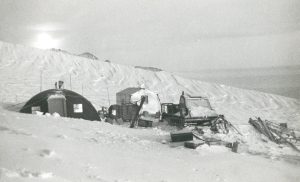 Established in May 1969 at 72°57’54.18″ South, -3°47’47.25 West, Borga Base was a semi-permanent scientific research base operated by South Africa in Antarctica (1969-1976) located 350 kilometers (220 mi) south of South Africa’s primary Antarctic research station SANAE I
Established in May 1969 at 72°57’54.18″ South, -3°47’47.25 West, Borga Base was a semi-permanent scientific research base operated by South Africa in Antarctica (1969-1976) located 350 kilometers (220 mi) south of South Africa’s primary Antarctic research station SANAE I
Borga Base was created with the support of Belgian aircraft during the International Geophisical Year and was inaugurated in 1969. Its main building was a Parcoll hut, a long hut with a semicircular frame resembling half a cylinder.
In the years of its operation (the main research activities of Borga Base were geological surveying and weather monitoring), expedition teams would attempt the traverse from SANAE to Borga Base using specialized tractors, though they were not always successful. In 1969, mechanic Gordon Mackie was the first casualty of South African Antarctic research when he fell to his death on the traverse between the two bases. In 1970, mechanical and weather difficulties forced the team to abandon their attempt to reach Borga. In 1971, mechanical issues once again prevented the team from reaching Borga Base so they created , another semi-permanent station (Grunehogna Base WAP ZAF-NEW), using a prefabricated hut.
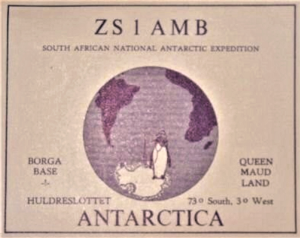 WAP thanks immensely our friend Oliver F6EPN who, with the pubblication of the old QSL of ZS1AMB active from Borga Base in 1969, allowed us to complete the story of this Base been on the air, thanks to Chris Muir ZS6BCT (radio operator of the Borga Team expedition),
WAP thanks immensely our friend Oliver F6EPN who, with the pubblication of the old QSL of ZS1AMB active from Borga Base in 1969, allowed us to complete the story of this Base been on the air, thanks to Chris Muir ZS6BCT (radio operator of the Borga Team expedition), 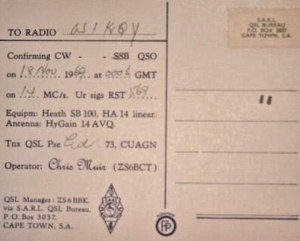
South Africa’s Borga Base operate by ZS1AMB Nov. 1969. (QSL via ZS6BBK) is listed on WAP-WADA Directory as WAP ZAF-Ø8.
.
TNX Olivier F6EPN for his great help
ANTARCTIC News Bulletin, pubblished by New Zealand Antarctic Society March, 1970 at page 387-388 reports:
Good use was made of South Africa’s new Borga Base, erected last year with the aid of Belgian aircraft during the joint summer expedition. The new base enables geologists to explore new areas and makes it possible to undertake research over a far greater area.
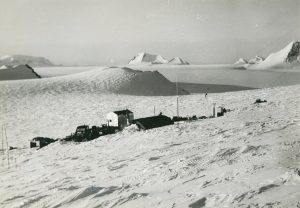 Borga Base, a 4-man wintering-over station, was established during May 1969 near Huldreslottet Nunatak (72° 50’S, 3° 48’W), some 350 km. due south of SANAE. The detailed geological investigation of the Kirwan Escarpment, particularly the Tunga region, was completed during the post-winter field-season and Antarctic history was made when the hitherto virgin region of the Escarpment between 5° and 7°W, was mapped during mid-summer 1969/70. The field parties progressed up to the south easternmost continuation of the Escarpment and could clearly see in the distance Heimefrontfjella where British geologists mapped in previous years. The inland base has proved to be a great success and Anton Aucamp and Leon Wolmarans (geologists), Chris Muir (radio operator) and Wilfred Hodsdon (leader and veteran of three expeditions) survived the wintering over extremely well.
Borga Base, a 4-man wintering-over station, was established during May 1969 near Huldreslottet Nunatak (72° 50’S, 3° 48’W), some 350 km. due south of SANAE. The detailed geological investigation of the Kirwan Escarpment, particularly the Tunga region, was completed during the post-winter field-season and Antarctic history was made when the hitherto virgin region of the Escarpment between 5° and 7°W, was mapped during mid-summer 1969/70. The field parties progressed up to the south easternmost continuation of the Escarpment and could clearly see in the distance Heimefrontfjella where British geologists mapped in previous years. The inland base has proved to be a great success and Anton Aucamp and Leon Wolmarans (geologists), Chris Muir (radio operator) and Wilfred Hodsdon (leader and veteran of three expeditions) survived the wintering over extremely well.
11th Expedition geologists and support personnel have already taken over the Base for the 1970-season, during which it is hoped to complete the detailed mapping of the Basement rocks exposed along the Escarpment and in the Juletoppane (72° 30’S, 06°W).
The 11th Expedition will also establish a safe route across the Pencksokka from Borga Base on to the Polar Plateau. This will be used as the first stage of a 600-km over snow traverse from SANAE via Borga up to the northernmost turning point of the U.S. South Pole-Queen Maud Land Traverse. It is anticipated that this geophysical-glaciological traverse will take place after the winter of 1971.
COASTAL SURVEY
Captain K. T. McNish, master M.V. R.S.A., repeated his 1964-radar survey of more than 350 km. of ice front in the King Haakon VII Sea. Significant changes in the configuration of the ice front have been recorded during the intervening five years. The most important change is the calving of nearly two-thirds (ca 1800km2) of Trolltunga, the more than 120 km. long ice tongue along the Greenwich Meridian. This event is undoubtedly of major glaciological and cartographic significance. Off-shore echo soundings have also indicated that the break-away point of the continental shelf lies at approximately 700 fathoms and that the continental slope is a very steep (1:4), linear feature. It was planned to extend the coastal survey during the present relief but close pack ice has thus far prevented any further penetration to the East.
TRAGEDY
1969 ended tragically with the unex-pected death of Gordon Mackie, Mechanic of SANAE 10. Three expedition members, including the late Mr. Mackie, left SANAE for Borga Base to collect a broken down tractor and make magnetic observations. On December 3, 1969, having completed the observations for the day, Mr. Mackie went to look at a windscoop, fell into it and was killed instantly. He is the first member of a South African team to be killed in the Antarctic. The burial will take place at East London, Cape Province after the RSA has returned from the Antarctic.
NEW TEAM
SANAE II, comprising 18 members, left Cape Town on January 10. 1970, for the Antarctic. The journey was uneventful and the transfer of the four expedition members to Borga Base, approximately 2 km. southeast of SANAE. The existing base at SANAE was erected at the beginning of 1962 and will be replaced by a new base at the beginning of 1971. A new power shack was also erected by the PWD team.
BUILDINGS
Planning the new main base is progressing well, and it is hoped to have it erected during January-February, 1971. 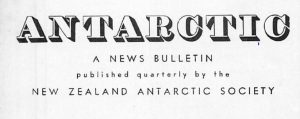 The old buildings, erected in 1962, arc now 35 feet under snow and ice, and are still withstanding all stresses and strains.
The old buildings, erected in 1962, arc now 35 feet under snow and ice, and are still withstanding all stresses and strains.
References: Vol.5, No.9, March 1970 page 387-388
Mmymtmmx* a N E W S B U L L E T I N – DocsLib

 After the joint venture with the Hams of Russian Robinson Club (RRC) in the celebrations of the 200th anniversary of the discovery of Antarctica, WAP proposes a new friendship adventure, undertaking jointly in honor of the Italian Air Force (
After the joint venture with the Hams of Russian Robinson Club (RRC) in the celebrations of the 200th anniversary of the discovery of Antarctica, WAP proposes a new friendship adventure, undertaking jointly in honor of the Italian Air Force ( Additional purpose, is to share what Nations and Organizations are doing to protect this still non contaminated corner of the world, to share WW a message of peace .
Additional purpose, is to share what Nations and Organizations are doing to protect this still non contaminated corner of the world, to share WW a message of peace . The conference held on last November 11, is an instance of integration and exchange between researchers who have developed or are currently developing Antarctic Science activities. The idea is to share the progress, difficulties and eventual solutions that have arisen in the course of the projects. The purpose of the meeting, is yo allow generating and consolidating research collaborations, as well as evaluating the work completed with a perspective view of activities to eventually continue.
The conference held on last November 11, is an instance of integration and exchange between researchers who have developed or are currently developing Antarctic Science activities. The idea is to share the progress, difficulties and eventual solutions that have arisen in the course of the projects. The purpose of the meeting, is yo allow generating and consolidating research collaborations, as well as evaluating the work completed with a perspective view of activities to eventually continue.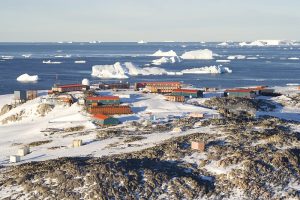 Scientists and technical staff at the French Base Dumont d’Urville,
Scientists and technical staff at the French Base Dumont d’Urville, 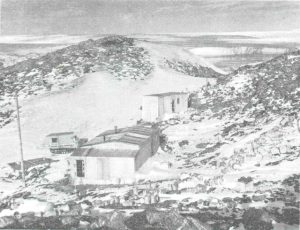 Thanks to Olivier F6EPN, we have rebuilt the history of Marret Base which, so far, has been forgotten by our careful searches of old and new Antarctic Bases and settlements.
Thanks to Olivier F6EPN, we have rebuilt the history of Marret Base which, so far, has been forgotten by our careful searches of old and new Antarctic Bases and settlements.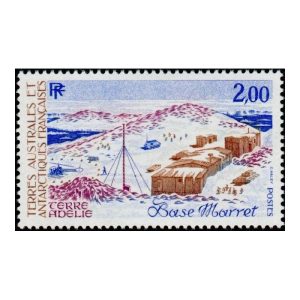
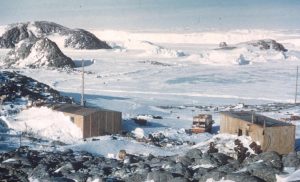 Today, the Marret building on Petrel Island, restored by the 36th French Mission, is always present and many are wintering them which made there some scrapers, evenings melted pancakes and others, on the traces of Prevost, Marret and the others…
Today, the Marret building on Petrel Island, restored by the 36th French Mission, is always present and many are wintering them which made there some scrapers, evenings melted pancakes and others, on the traces of Prevost, Marret and the others…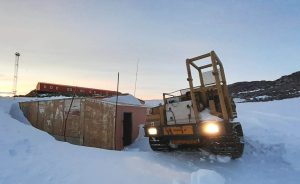 Base Marret (aka Cabane Marret), new issued
Base Marret (aka Cabane Marret), new issued  So, Marret 66°40’12” South, 140°1’ 0” East was already classified as Base before of DDU (66°39’46” South, 140°00’05” East) which was built and opened on January 12, 1956.
So, Marret 66°40’12” South, 140°1’ 0” East was already classified as Base before of DDU (66°39’46” South, 140°00’05” East) which was built and opened on January 12, 1956.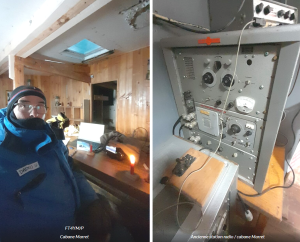 confirm that FT4YM/P operating from a building of Marret Base be eligible as WAP FRA-11.
confirm that FT4YM/P operating from a building of Marret Base be eligible as WAP FRA-11. Dr. Volker Strecke DL8JDX did participate the Polar Salon Liberec at Liberec City, Czech Republic.
Dr. Volker Strecke DL8JDX did participate the Polar Salon Liberec at Liberec City, Czech Republic.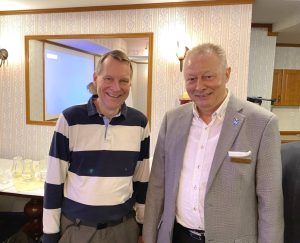
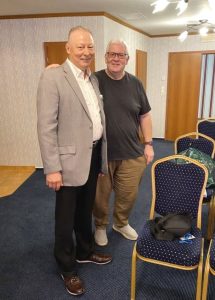 The Photo at left, shows Dr. Voker Strecke (
The Photo at left, shows Dr. Voker Strecke (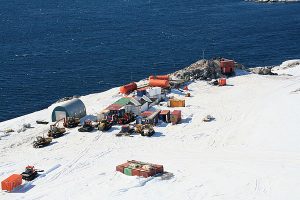 Robert Guillard-Cap Prud’homme Station at 66°41’31″South, 139°53’46″East, is a French-Italian station managed by the French Polar Institute Paul-Emile Victor (
Robert Guillard-Cap Prud’homme Station at 66°41’31″South, 139°53’46″East, is a French-Italian station managed by the French Polar Institute Paul-Emile Victor (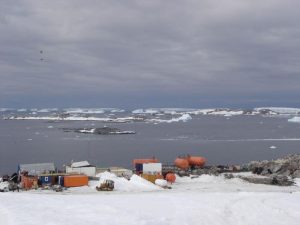 The joint French-Italian Station Robert Guillard-Cape Prud’homme (
The joint French-Italian Station Robert Guillard-Cape Prud’homme (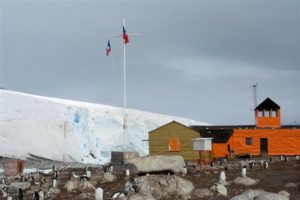 The Chilean scientific Base, Gabriel Gonzalez Videla, is located at 64° 49′ 24″ South, 62° 51′ 7″ West on the Danco Coast at the north end of the “Antarctic” Peninsula. The Base is situated on two small islands: Lomnitz and Dott (approx. 18,000 square metres), The two islands are separated by a very narrow channel partly filled with morainal material. The northern island is named Isla “Lomnitz” and the southern island, Isla “Dott”. Between the islands and the mainland is a 90-metre channel, which is dry at low tide. This channel and the eastern shores of the islands are covered by till.
The Chilean scientific Base, Gabriel Gonzalez Videla, is located at 64° 49′ 24″ South, 62° 51′ 7″ West on the Danco Coast at the north end of the “Antarctic” Peninsula. The Base is situated on two small islands: Lomnitz and Dott (approx. 18,000 square metres), The two islands are separated by a very narrow channel partly filled with morainal material. The northern island is named Isla “Lomnitz” and the southern island, Isla “Dott”. Between the islands and the mainland is a 90-metre channel, which is dry at low tide. This channel and the eastern shores of the islands are covered by till.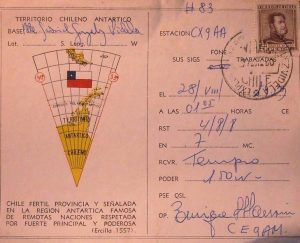 Isla Util, a small island in the Gerlache Strait, lies 7 miles north of the base.
Isla Util, a small island in the Gerlache Strait, lies 7 miles north of the base.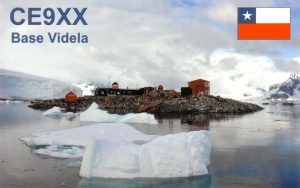 thin sections of the rocks collected were studied subsequently at the University of Wisconsin.
thin sections of the rocks collected were studied subsequently at the University of Wisconsin. In 1987 Greenpeace established the ‘World Park Base’ in Antarctica which stayed until 1991
In 1987 Greenpeace established the ‘World Park Base’ in Antarctica which stayed until 1991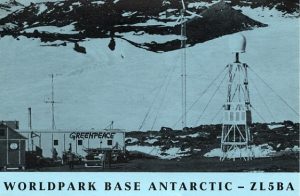 The main Bbase building was constructed in 1987 from prefabricated units, which were designed and manufactured by a German polar construction and engineering company. Between 1988 and 1990 several structures were added. Eventually, basebuildings consisted of an L-shaped main building and a small food storage and emergency building. The main building comprised an accommodation unit housing a common living area, four separate bedrooms, a bathroom, radio room, medical and science room, coat room and a room containing snow melting equipment. A cold porch was also attached. The engine room was housed in the same building, separated from theother facilities by a walkway. A lean-to was used for storage. The short side of the L-shaped building was formed by another unit joined to the main building by a walkway which housed a workshop, science lab, dark room and field equipment store. The latter unit, called the FOS hut, had been acquired from the Footsteps of Scott Expedition which had previously had a base at the site.
The main Bbase building was constructed in 1987 from prefabricated units, which were designed and manufactured by a German polar construction and engineering company. Between 1988 and 1990 several structures were added. Eventually, basebuildings consisted of an L-shaped main building and a small food storage and emergency building. The main building comprised an accommodation unit housing a common living area, four separate bedrooms, a bathroom, radio room, medical and science room, coat room and a room containing snow melting equipment. A cold porch was also attached. The engine room was housed in the same building, separated from theother facilities by a walkway. A lean-to was used for storage. The short side of the L-shaped building was formed by another unit joined to the main building by a walkway which housed a workshop, science lab, dark room and field equipment store. The latter unit, called the FOS hut, had been acquired from the Footsteps of Scott Expedition which had previously had a base at the site. 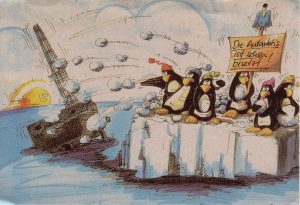 The original base was designed to accommodate four persons. In later years, a workshop and laboratory building and two more bedrooms were prefabricated and added to the original structure as it became apparent that extra space was needed for the wintering teams. These additions were simple to construct andinstall, with minimum excavation necessary. Also installed on the base was amateur radio equipment for contact with Ham radio enthusiasts worldwide, and a Uosat satellite link that was part of a scientific project run in conjunction with the University of Sussex in the United Kingdom.
The original base was designed to accommodate four persons. In later years, a workshop and laboratory building and two more bedrooms were prefabricated and added to the original structure as it became apparent that extra space was needed for the wintering teams. These additions were simple to construct andinstall, with minimum excavation necessary. Also installed on the base was amateur radio equipment for contact with Ham radio enthusiasts worldwide, and a Uosat satellite link that was part of a scientific project run in conjunction with the University of Sussex in the United Kingdom. Thanks to our friend Volker DL8JDX, for this rare and old picture. A personal gift from Leonid Labutin UA3CR (SK 1998).
Thanks to our friend Volker DL8JDX, for this rare and old picture. A personal gift from Leonid Labutin UA3CR (SK 1998). 1982-1983. Expedition to Antarctica with Malakhov, Shishkarev, Redkin and Leonid Labutin. Active work on board ships. Visiting radio amateurs in the Canary Islands, Brazil, Uruguay. Work with Druzhnaya Base (
1982-1983. Expedition to Antarctica with Malakhov, Shishkarev, Redkin and Leonid Labutin. Active work on board ships. Visiting radio amateurs in the Canary Islands, Brazil, Uruguay. Work with Druzhnaya Base ( New research on Antarctica, including the first map of iceberg calving, doubles the previous estimates of loss from ice shelves and details how the continent is changing.
New research on Antarctica, including the first map of iceberg calving, doubles the previous estimates of loss from ice shelves and details how the continent is changing. DPØPOL/mm is also on the air irregularly from I/B Polarstern. Operators are Andy DL3LRM and Jörg DJ0HO. There is regular activity from DPØGVN and DP0POL/mm on QO-100 satellite, see
DPØPOL/mm is also on the air irregularly from I/B Polarstern. Operators are Andy DL3LRM and Jörg DJ0HO. There is regular activity from DPØGVN and DP0POL/mm on QO-100 satellite, see 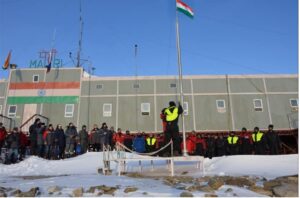 VU2CUW , Sarabjeet S. “Sunny” Chhabra , 25 years old electronics and communications engineer currently working as a design engineer for a CNC Machinist is joining the Indian Antarctic campaign 2022-2023.
VU2CUW , Sarabjeet S. “Sunny” Chhabra , 25 years old electronics and communications engineer currently working as a design engineer for a CNC Machinist is joining the Indian Antarctic campaign 2022-2023.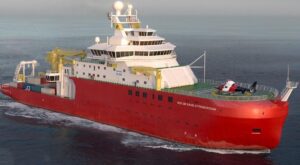 Polar Ship RRS Sir David Attenborough
Polar Ship RRS Sir David Attenborough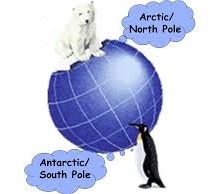 Arctic and Antarctica are brother Poles , and its a great pleasure for
Arctic and Antarctica are brother Poles , and its a great pleasure for 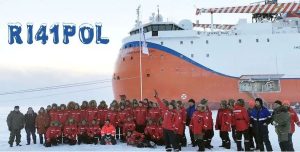 Today, the foundations for two more masts were frozen in ice. Tomorrow we will raise the main mast for KV – 15 meters, after that the laying of cable routes and the installation of antennas.
Today, the foundations for two more masts were frozen in ice. Tomorrow we will raise the main mast for KV – 15 meters, after that the laying of cable routes and the installation of antennas.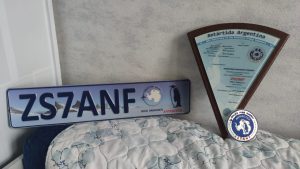 Wolf Fang Runway (
Wolf Fang Runway (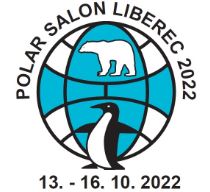 The Polar Salon is an international “worldwide” polar philatelic exhibition that takes place in various parts of the world every three years, mostly as part of national or international exhibitions. Organizing Committee of European Stamp Exhibition LIBEREC 2022, together with the clubs of polar collectors decided to organize the 5th International Polar Salon in Liberec, Czec Republic in 2022.
The Polar Salon is an international “worldwide” polar philatelic exhibition that takes place in various parts of the world every three years, mostly as part of national or international exhibitions. Organizing Committee of European Stamp Exhibition LIBEREC 2022, together with the clubs of polar collectors decided to organize the 5th International Polar Salon in Liberec, Czec Republic in 2022. WAP
WAP Maiviken Hut located at 54°14’52” South, 34°30’23” West , next to Maivatn lake, in the Bore Valley. Next to the lake lays this cozy little hut built in 1974 and kept in good conditions, being normally used by King Edward Point scientists. It was a quite precarious shelter in the past but is getting recently renovated.. At the present times Maiviken is often visited by scientist from King Edward Point for research purposes, mostly surveying Fur seal population and Gentoo penguins nesting at Tortula Cove.
Maiviken Hut located at 54°14’52” South, 34°30’23” West , next to Maivatn lake, in the Bore Valley. Next to the lake lays this cozy little hut built in 1974 and kept in good conditions, being normally used by King Edward Point scientists. It was a quite precarious shelter in the past but is getting recently renovated.. At the present times Maiviken is often visited by scientist from King Edward Point for research purposes, mostly surveying Fur seal population and Gentoo penguins nesting at Tortula Cove. On October 7, 1985, at the XIII Consultative Meeting held in Belgium, the Eastern Republic of Uruguay was accepted as a Consultative Member of the Antarctic Treaty, thus becoming part of the group of Nations that have a voice and a vote in the decisions of the international community of Antarctica. In recognition of this fact of enormous importance, every year Uruguay celebrates October 7 as
On October 7, 1985, at the XIII Consultative Meeting held in Belgium, the Eastern Republic of Uruguay was accepted as a Consultative Member of the Antarctic Treaty, thus becoming part of the group of Nations that have a voice and a vote in the decisions of the international community of Antarctica. In recognition of this fact of enormous importance, every year Uruguay celebrates October 7 as 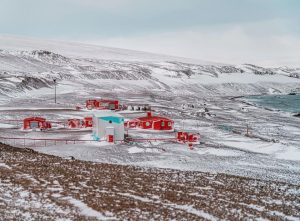 Commenting on the verses of Delia M. Musso about Antarctica, Prof. Ricardo Pallares says:
Commenting on the verses of Delia M. Musso about Antarctica, Prof. Ricardo Pallares says: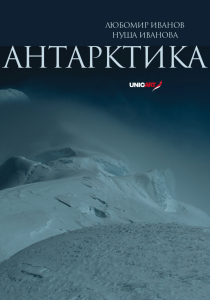 I recall when on 14th may 2014 I did receive a great gift from Dr. Lyubo.
I recall when on 14th may 2014 I did receive a great gift from Dr. Lyubo. What is the Antarctic? Some extraordinary nature on the border between the earthly and the cosmic? A treasure trove of natural resources of global importance? A land with a no longer small history of heroic efforts on the limit of human abilities? Or the future home of numerous settlers? Whose is the Antarctic? Is it a common heritage that will continue to be managed jointly by a group of countries under the provisions of the Antarctic Treaty? Or is it, on the contrary, yet to be partitioned into separate possessions? Many questions, with still more answers.
What is the Antarctic? Some extraordinary nature on the border between the earthly and the cosmic? A treasure trove of natural resources of global importance? A land with a no longer small history of heroic efforts on the limit of human abilities? Or the future home of numerous settlers? Whose is the Antarctic? Is it a common heritage that will continue to be managed jointly by a group of countries under the provisions of the Antarctic Treaty? Or is it, on the contrary, yet to be partitioned into separate possessions? Many questions, with still more answers. Dr Ivanov has taken part in several Antarctic expeditions. In 2004, Ivanov went with Doychin Vasiley on the Tangra 2004 topographic expedition, noted by Discovery Channel, the Natural Historic Museum, the Royal Collection and the British Antarctic Survey as a timeline event in Antarctic exploration. Awarded the jubilee medal 30th Bulgarian Antarctic Expedition by the Bulgarian Antarctic Institute for his active participation in the expeditions and in the building of St. Kliment Ohridski Base (
Dr Ivanov has taken part in several Antarctic expeditions. In 2004, Ivanov went with Doychin Vasiley on the Tangra 2004 topographic expedition, noted by Discovery Channel, the Natural Historic Museum, the Royal Collection and the British Antarctic Survey as a timeline event in Antarctic exploration. Awarded the jubilee medal 30th Bulgarian Antarctic Expedition by the Bulgarian Antarctic Institute for his active participation in the expeditions and in the building of St. Kliment Ohridski Base (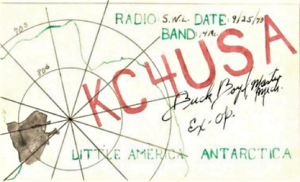 Thanks to Olivier F6EPN (aka Spratley Woody at his Facebook page), another old and rare QSL card, KC4USA dated 1949 proves that Ham Radio was performed at this Base, which was not present on WAP-WADA Directory.
Thanks to Olivier F6EPN (aka Spratley Woody at his Facebook page), another old and rare QSL card, KC4USA dated 1949 proves that Ham Radio was performed at this Base, which was not present on WAP-WADA Directory.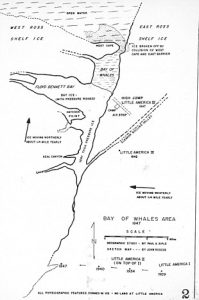 After the war, Little America IV consisting of an airstrip and 60 tents, was set up nearby as a headquarters for Operation High Jump (1946–47), an expedition designed to explore and document Antarctica’s coastline as well as to extend U.S. sovereignty to the continent. When an expedition next returned (1956) in preparation for the International Geophysical Year (1957–58), parts of the earlier Little America camps were found to have vanished because of calving of the ice shelf.
After the war, Little America IV consisting of an airstrip and 60 tents, was set up nearby as a headquarters for Operation High Jump (1946–47), an expedition designed to explore and document Antarctica’s coastline as well as to extend U.S. sovereignty to the continent. When an expedition next returned (1956) in preparation for the International Geophysical Year (1957–58), parts of the earlier Little America camps were found to have vanished because of calving of the ice shelf.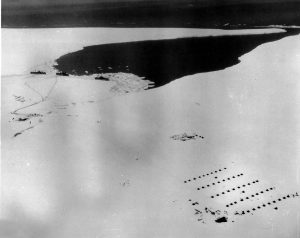 Little America IV camp was thug established as US Navy’s Operation Highjump, of 1946–1947.
Little America IV camp was thug established as US Navy’s Operation Highjump, of 1946–1947.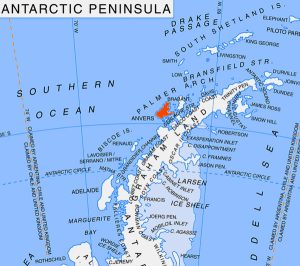 The larval health of an Antarctic cold-water coral species may be resistant to warming water temperatures, a University of Maine study finds, bringing new hope for the climate change resilience of deep-sea ecosystems in the Western Antarctic Peninsula.
The larval health of an Antarctic cold-water coral species may be resistant to warming water temperatures, a University of Maine study finds, bringing new hope for the climate change resilience of deep-sea ecosystems in the Western Antarctic Peninsula.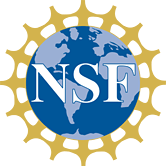 “Although their habitat is now changing faster than other places around the world, most marine animals in the Southern Ocean are thought to have a limited capacity to adapt to environmental shifts,” says Julia Johnstone, principal author of the study. “Especially during the larval stage, when developmental processes are organizing and laying the foundations for key life-long functions like prey capture and growth, those environmental changes can have an outsize impact.”
“Although their habitat is now changing faster than other places around the world, most marine animals in the Southern Ocean are thought to have a limited capacity to adapt to environmental shifts,” says Julia Johnstone, principal author of the study. “Especially during the larval stage, when developmental processes are organizing and laying the foundations for key life-long functions like prey capture and growth, those environmental changes can have an outsize impact.”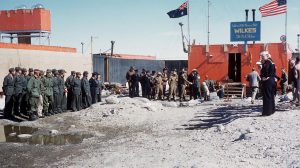 From Jan 1957 through 6 February 1959 Wilkes was a Multinational Base (
From Jan 1957 through 6 February 1959 Wilkes was a Multinational Base (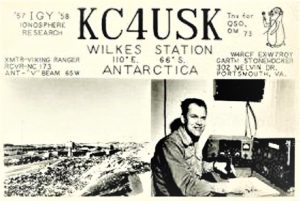 Wilkes was seen to be strategically located because of its proximity to the south magnetic pole. Under an agreement with the United States, Australia was permitted to use the station stores and supplies that remained, on condition that nothing was removed and that Australia through reported annually on consumption of stores and supplies.
Wilkes was seen to be strategically located because of its proximity to the south magnetic pole. Under an agreement with the United States, Australia was permitted to use the station stores and supplies that remained, on condition that nothing was removed and that Australia through reported annually on consumption of stores and supplies.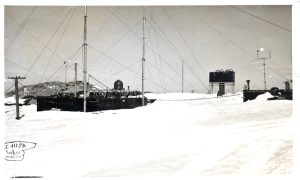 A plan to realise a new station Casey Repstat (Replacement station) was developed on the other side of the bay. Repstat was commissioned in 1969 and Wilkes was closed.
A plan to realise a new station Casey Repstat (Replacement station) was developed on the other side of the bay. Repstat was commissioned in 1969 and Wilkes was closed.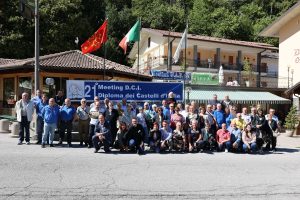 Mondovì Section of the Italian Radio Amateurs Association, with the contribution of the Cassa di Risparmio di Savigliano Bank and with the patronage of the Presidency of the Regional Council of Piedmont, the Province of Cuneo, the City of Mondovì, the Municipality of Roccaforte Mondovì, the A.R.I. National and C.R.P.V.A. has organized for the 21st consecutive year, an important international event aimed at highlighting the aspects related to Amateur Radio and the extraordinary historical, artistic and naturalistic heritage of the Italian territory.
Mondovì Section of the Italian Radio Amateurs Association, with the contribution of the Cassa di Risparmio di Savigliano Bank and with the patronage of the Presidency of the Regional Council of Piedmont, the Province of Cuneo, the City of Mondovì, the Municipality of Roccaforte Mondovì, the A.R.I. National and C.R.P.V.A. has organized for the 21st consecutive year, an important international event aimed at highlighting the aspects related to Amateur Radio and the extraordinary historical, artistic and naturalistic heritage of the Italian territory.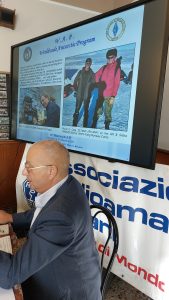 joining the meeting held in the frame of the beautiful , Borgata Norea of Roccaforte Mondovì, where participants have been booking at the Hotel Restaurant Commercio, in where, all the works did take place.
joining the meeting held in the frame of the beautiful , Borgata Norea of Roccaforte Mondovì, where participants have been booking at the Hotel Restaurant Commercio, in where, all the works did take place.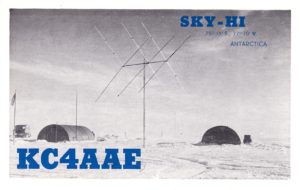 WAP
WAP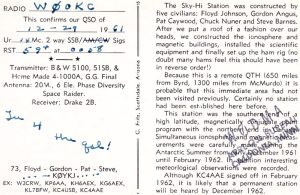 Certainly no station had been established here before. This station was the southern end of a high latitude, magnetically conjugate point program with the Northern end in Canada. Simultaneous ionospheric and magnetic measurements were carefully made during the Antarctic Summer from early December 1961 until February 1962. In addition, interesting meteorological observations were recorded.
Certainly no station had been established here before. This station was the southern end of a high latitude, magnetically conjugate point program with the Northern end in Canada. Simultaneous ionospheric and magnetic measurements were carefully made during the Antarctic Summer from early December 1961 until February 1962. In addition, interesting meteorological observations were recorded. It was first became operational on February 24, 1984 which was later brought under the Department of Post at Goa on January 26, 1988.
It was first became operational on February 24, 1984 which was later brought under the Department of Post at Goa on January 26, 1988.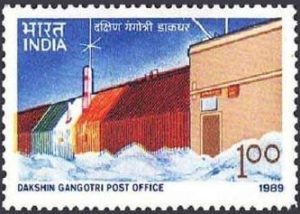
 This month, the prestigious
This month, the prestigious  N2OO (
N2OO (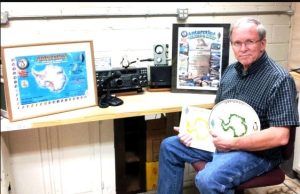 This takes years and years of continuous monitoring, setting skeds, following Antarctic expeditions and scientific seasons, all with only one goal; to work a new one. Bases, camps, huts, refuges, and rare scientific sites are the rewards of ample research done by these Antarctic DX hounds. Currently, there are many different Antarctic DX programs and awards available from Argentina, Australia, France, Italy, Poland, Russia, and Ukraine. Two sought-after Antarctic awards are sponsored by the
This takes years and years of continuous monitoring, setting skeds, following Antarctic expeditions and scientific seasons, all with only one goal; to work a new one. Bases, camps, huts, refuges, and rare scientific sites are the rewards of ample research done by these Antarctic DX hounds. Currently, there are many different Antarctic DX programs and awards available from Argentina, Australia, France, Italy, Poland, Russia, and Ukraine. Two sought-after Antarctic awards are sponsored by the  Established in May 1969 at 72°57’54.18″ South, -3°47’47.25 West, Borga Base was a semi-permanent scientific research base operated by South Africa in Antarctica (1969-1976) located 350 kilometers (220 mi) south of South Africa’s primary Antarctic research station SANAE I
Established in May 1969 at 72°57’54.18″ South, -3°47’47.25 West, Borga Base was a semi-permanent scientific research base operated by South Africa in Antarctica (1969-1976) located 350 kilometers (220 mi) south of South Africa’s primary Antarctic research station SANAE I WAP
WAP
 Borga Base, a 4-man wintering-over station, was established during May 1969 near Huldreslottet Nunatak (72° 50’S, 3° 48’W), some 350 km. due south of SANAE. The detailed geological investigation of the Kirwan Escarpment, particularly the Tunga region, was completed during the post-winter field-season and Antarctic history was made when the hitherto virgin region of the Escarpment between 5° and 7°W, was mapped during mid-summer 1969/70. The field parties progressed up to the south easternmost continuation of the Escarpment and could clearly see in the distance Heimefrontfjella where British geologists mapped in previous years. The inland base has proved to be a great success and Anton Aucamp and Leon Wolmarans (geologists),
Borga Base, a 4-man wintering-over station, was established during May 1969 near Huldreslottet Nunatak (72° 50’S, 3° 48’W), some 350 km. due south of SANAE. The detailed geological investigation of the Kirwan Escarpment, particularly the Tunga region, was completed during the post-winter field-season and Antarctic history was made when the hitherto virgin region of the Escarpment between 5° and 7°W, was mapped during mid-summer 1969/70. The field parties progressed up to the south easternmost continuation of the Escarpment and could clearly see in the distance Heimefrontfjella where British geologists mapped in previous years. The inland base has proved to be a great success and Anton Aucamp and Leon Wolmarans (geologists),  The old buildings, erected in 1962, arc now 35 feet under snow and ice, and are still withstanding all stresses and strains.
The old buildings, erected in 1962, arc now 35 feet under snow and ice, and are still withstanding all stresses and strains.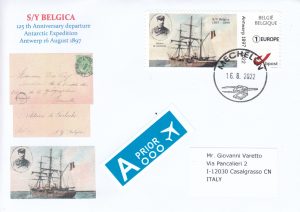 Monday August 16 , 897. The port of Antwerp is filled with people. The National Anthem is being played, canon shots of joy are heard across the River. The Belgica leaves the harbour, setting sail to Antarctica. Other than a lost whaler, there has never been a soul nearby…
Monday August 16 , 897. The port of Antwerp is filled with people. The National Anthem is being played, canon shots of joy are heard across the River. The Belgica leaves the harbour, setting sail to Antarctica. Other than a lost whaler, there has never been a soul nearby… The Belgian Antarctic Expedition of 1897–1899 was the first expedition to winter in the Antarctic region. Led by Adrien de Gerlache de Gomery aboard the R/V Belgica, it was the first Belgian Antarctic expedition and is considered the first expedition of the Heroic Age of Antarctic Exploration. Among its members were Frederick Cook and Roald Amundsen, explorers who would later attempt the respective conquests of the North and South Poles.
The Belgian Antarctic Expedition of 1897–1899 was the first expedition to winter in the Antarctic region. Led by Adrien de Gerlache de Gomery aboard the R/V Belgica, it was the first Belgian Antarctic expedition and is considered the first expedition of the Heroic Age of Antarctic Exploration. Among its members were Frederick Cook and Roald Amundsen, explorers who would later attempt the respective conquests of the North and South Poles.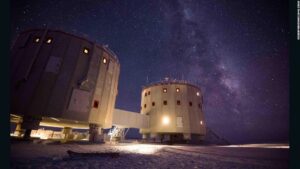 ESA-sponsored medical doctor Hannes Hagson snapped this picture from the Station’s front door in early on 5 August. “Time here has the strange quality of both passing really quickly and very slowly at the same time,” he shared, “and in just two days we expect the return of the sun to grace us here at 75 degrees south! The returning daylight certainly has us all cheered up and starting to sense the beginning of the final part of this adventure.”
ESA-sponsored medical doctor Hannes Hagson snapped this picture from the Station’s front door in early on 5 August. “Time here has the strange quality of both passing really quickly and very slowly at the same time,” he shared, “and in just two days we expect the return of the sun to grace us here at 75 degrees south! The returning daylight certainly has us all cheered up and starting to sense the beginning of the final part of this adventure.” Of course, it’s not all fun and games. Hannes has been busy with biomedical research, as he continues to gather data from crew urine, stool and blood samples, as well as cognitive and psychological measures through questionnaires to study the effects of isolated, confined and extreme environments on the human body.
Of course, it’s not all fun and games. Hannes has been busy with biomedical research, as he continues to gather data from crew urine, stool and blood samples, as well as cognitive and psychological measures through questionnaires to study the effects of isolated, confined and extreme environments on the human body.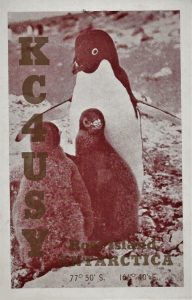 Anthony W Delprato, WA4JQS is an Antarctic veteran (
Anthony W Delprato, WA4JQS is an Antarctic veteran (
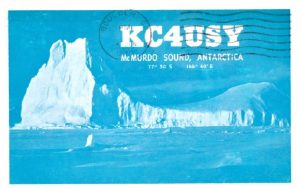
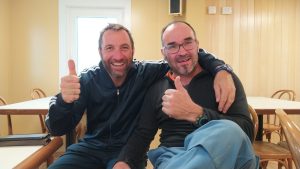 David FT4YM (FT4YM) will be QRV again from Antarctica during the next summer campaign (December 2022 to March 2023).
David FT4YM (FT4YM) will be QRV again from Antarctica during the next summer campaign (December 2022 to March 2023).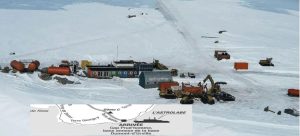 Cape Prud’homme (
Cape Prud’homme (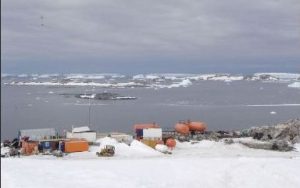 On the mainland, 5 km from the Island of Petrels, DDU (Dumont D’Urville) is articulated to a third place, Robert Guillard (Cap Prud’homme), the basic element of a system whose main objective is to organize, depending on the year, in addition to scientific expeditions, two or three raids to supply fuel and equipment to the Franco-Italian station Concordia.
On the mainland, 5 km from the Island of Petrels, DDU (Dumont D’Urville) is articulated to a third place, Robert Guillard (Cap Prud’homme), the basic element of a system whose main objective is to organize, depending on the year, in addition to scientific expeditions, two or three raids to supply fuel and equipment to the Franco-Italian station Concordia.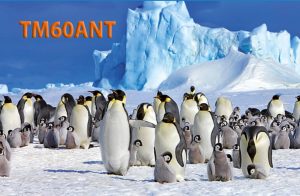 François Bergez F8DVD informs
François Bergez F8DVD informs 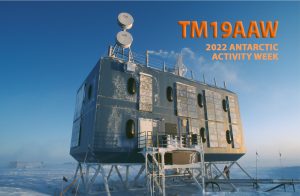 The structure is raised on stilts to allow drifting snow to blow under it.
The structure is raised on stilts to allow drifting snow to blow under it. Something interesting has been publish recently on the web. Here an abstract:
Something interesting has been publish recently on the web. Here an abstract: 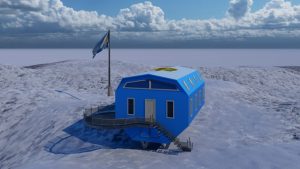 Three new multidisciplinary laboratories for the Esperanza, San Martín and Orcadas bases, together with new shelters on the Vega and Cerro Nevado islands, near the Marambio Base will be built during 2023 by Argentina in its Antarctic territory, based on an agreement signed last wee by the Ministers of Science, Daniel Filmus, of Defense, Jorge Taiana, and Foreign Affairs, Santiago Cafiero.
Three new multidisciplinary laboratories for the Esperanza, San Martín and Orcadas bases, together with new shelters on the Vega and Cerro Nevado islands, near the Marambio Base will be built during 2023 by Argentina in its Antarctic territory, based on an agreement signed last wee by the Ministers of Science, Daniel Filmus, of Defense, Jorge Taiana, and Foreign Affairs, Santiago Cafiero. The Polies have just join the now-annual Polympics, that have involved the other Antarctic stations in the 2022 Antarctic Games.
The Polies have just join the now-annual Polympics, that have involved the other Antarctic stations in the 2022 Antarctic Games.  Winter International Film Festival of Antarctica (WIFFA) is an annual film festival open exclusively to those who spend the entire winter in Antarctica or in Subantarctic areas.
Winter International Film Festival of Antarctica (WIFFA) is an annual film festival open exclusively to those who spend the entire winter in Antarctica or in Subantarctic areas.
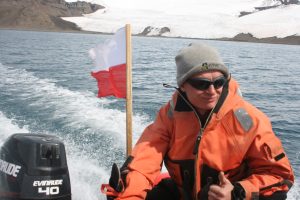 In a recent contact, Seba SQ1SGB has confirmed that his 4th season at Halley VI-a (
In a recent contact, Seba SQ1SGB has confirmed that his 4th season at Halley VI-a (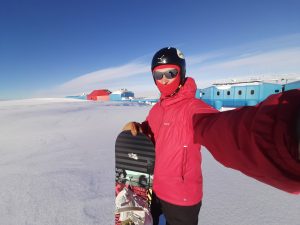
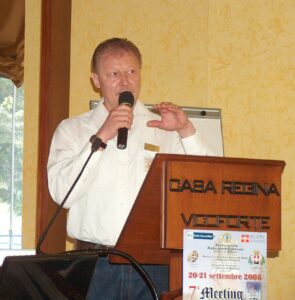 A very interesting pubblication, signed by Dr. Volker Strecke, DL8JDX, Antarctic veteran has been recentry pubblished on the german journal
A very interesting pubblication, signed by Dr. Volker Strecke, DL8JDX, Antarctic veteran has been recentry pubblished on the german journal 
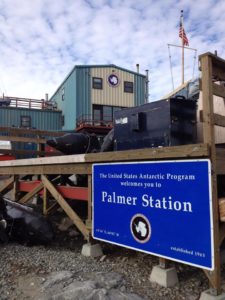 Live from Palmer Station
Live from Palmer Station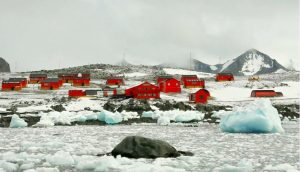 The meeting took place last week between ENACOM, represented by Professor Marcos Lafón Fariña from the Stations and Services Registration Area (Amateur Radio), and authorities from the Joint Antarctic Command. They have made analisys about the situation of the Antarctic operators which, in some cases, show up on Hamradio bands, from the different Argentinean bases, without the enabling license.
The meeting took place last week between ENACOM, represented by Professor Marcos Lafón Fariña from the Stations and Services Registration Area (Amateur Radio), and authorities from the Joint Antarctic Command. They have made analisys about the situation of the Antarctic operators which, in some cases, show up on Hamradio bands, from the different Argentinean bases, without the enabling license.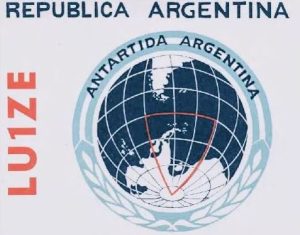 It was decided to give an intensive course next October 2022, to obtain the amateur radio license for all the operators that will integrate the different crews in the 2023 campaign to the white continent.
It was decided to give an intensive course next October 2022, to obtain the amateur radio license for all the operators that will integrate the different crews in the 2023 campaign to the white continent.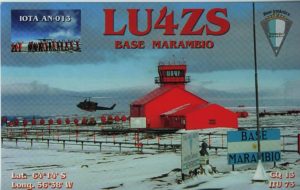 Activity of Argentine amateur radio stations in Antarctica, in addition to maintaining a reliable communications service, useful and important in regions like these, contribute to the diffusion of HF activities and promotion of Argentine sovereignty in the region. These activations have several purposes and objectives beside the usual DX activations.
Activity of Argentine amateur radio stations in Antarctica, in addition to maintaining a reliable communications service, useful and important in regions like these, contribute to the diffusion of HF activities and promotion of Argentine sovereignty in the region. These activations have several purposes and objectives beside the usual DX activations.
 The Maudheim Research Station (Maudheim , which Norwegian translates as house Maud) was the Base camp of the Swedish-British-Norwegian Antarctic Expedition including members of Australia and Canada between 1949 and 1952 .
The Maudheim Research Station (Maudheim , which Norwegian translates as house Maud) was the Base camp of the Swedish-British-Norwegian Antarctic Expedition including members of Australia and Canada between 1949 and 1952 . QSL below, dated November 7th 1950
QSL below, dated November 7th 1950
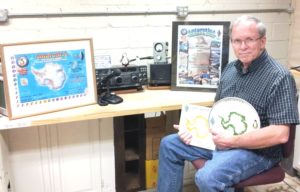 Logging a station operating from/in Antarctica has always been one of the best DX even wished. Several Hams, particularly the Old Timers are far above but just few of them can have over 200 Antarctic Bases on their logs! Years of years of continuous monitoring, setting skeds, follow Antarctic expeditions and scientific seasons, with the only goal to work a new one.
Logging a station operating from/in Antarctica has always been one of the best DX even wished. Several Hams, particularly the Old Timers are far above but just few of them can have over 200 Antarctic Bases on their logs! Years of years of continuous monitoring, setting skeds, follow Antarctic expeditions and scientific seasons, with the only goal to work a new one.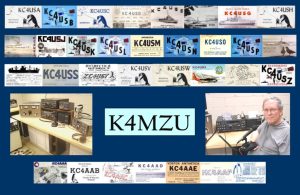 Bob has also achieved the TOP of the Antarctic Challenge 2020 Award with 203 Antarctic/Sub Antarctic Bases and Refuges.
Bob has also achieved the TOP of the Antarctic Challenge 2020 Award with 203 Antarctic/Sub Antarctic Bases and Refuges.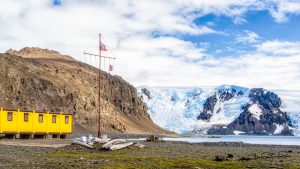 The Henryk Arctowski Polish Antarctic Station was established in 1977 and is now in need of serious improvement works. The Ministry of Science and Higher Education (MNiSW) is to grant new funds to the Henryk Arctowski Polish Antarctic Station to rebuild its infrastructure. “It can be stated firmly that the Polish Antarctic Station is our unofficial embassy in Antarctica. Every year it is visited by official international delegations, representatives of Antarctic programs of other states, as well as tourists from all around the world”, Minister for Science and Higher Education Jarosław Gowin announced on Wednesday, “However, this is not the most important for us”, he added. “The most important are the broad research capabilities which the station provides to Polish scientists.”
The Henryk Arctowski Polish Antarctic Station was established in 1977 and is now in need of serious improvement works. The Ministry of Science and Higher Education (MNiSW) is to grant new funds to the Henryk Arctowski Polish Antarctic Station to rebuild its infrastructure. “It can be stated firmly that the Polish Antarctic Station is our unofficial embassy in Antarctica. Every year it is visited by official international delegations, representatives of Antarctic programs of other states, as well as tourists from all around the world”, Minister for Science and Higher Education Jarosław Gowin announced on Wednesday, “However, this is not the most important for us”, he added. “The most important are the broad research capabilities which the station provides to Polish scientists.” 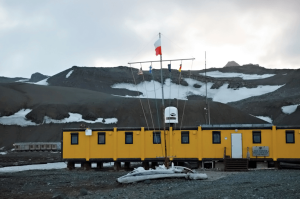
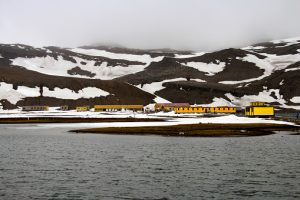 The reconstructed Henryk Arctowski Polish Antarctic Station is expected to start operation in 2023, Agnieszka Kruszewska from the Institute of Biophysics and Biochemistry at the Polish Academy of Sciences (IBB PAN), the station’s managing institution, has told. The rebuilding of the infrastructure and a new main hall of the Polar Research Station in the Antarctic will cost PLN 88 million (EUR 20.4 million) and will be financed with Poland’s science ministry’s grant, she added.
The reconstructed Henryk Arctowski Polish Antarctic Station is expected to start operation in 2023, Agnieszka Kruszewska from the Institute of Biophysics and Biochemistry at the Polish Academy of Sciences (IBB PAN), the station’s managing institution, has told. The rebuilding of the infrastructure and a new main hall of the Polar Research Station in the Antarctic will cost PLN 88 million (EUR 20.4 million) and will be financed with Poland’s science ministry’s grant, she added.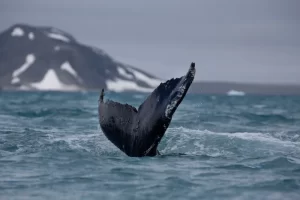 Now, for the first time, a research team has been able to show systematically that the fin whale population is recovering. The findings were published in the journal Scientific Reports.
Now, for the first time, a research team has been able to show systematically that the fin whale population is recovering. The findings were published in the journal Scientific Reports.

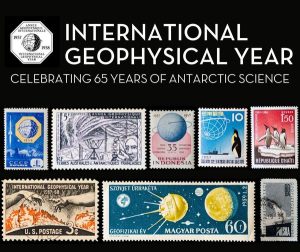 2022 is the 65th anniversary of the International Geophysical Year, or IGY, a collaborative, worldwide effort among 60 countries, 10,000 scientists and multiple scientific fields to study the Earth and sun. Today we celebrate the amazing contributions made possible by one of the most successful international scientific efforts in history.
2022 is the 65th anniversary of the International Geophysical Year, or IGY, a collaborative, worldwide effort among 60 countries, 10,000 scientists and multiple scientific fields to study the Earth and sun. Today we celebrate the amazing contributions made possible by one of the most successful international scientific efforts in history.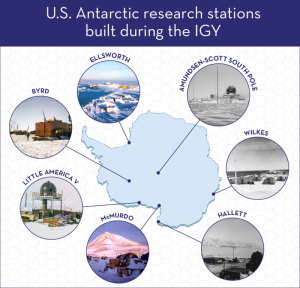 so scientists could study sunspots and observe the sun’s corona during a solar eclipse. Scientists designed and built instruments to study the atmosphere and near space environment, deployed seismic equipment to study earthquakes and ice sheets and used newly constructed radio and astronomical observatories to observe the sun and stars. For their research, scientists adapted many technologies first developed during World War II.
so scientists could study sunspots and observe the sun’s corona during a solar eclipse. Scientists designed and built instruments to study the atmosphere and near space environment, deployed seismic equipment to study earthquakes and ice sheets and used newly constructed radio and astronomical observatories to observe the sun and stars. For their research, scientists adapted many technologies first developed during World War II.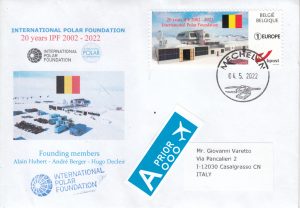 Founded by Belgian polar explorer Alain Hubert, Prof. Hugo Decleir and Prof. André Berger in 2002, the Brussels-based International Polar Foundation provides a novel interface between science and society, and was recognised by Belgian Royal Statute as a foundation for the public good in 2002. HM King Philippe is the International Polar Foundation’s honorary President.
Founded by Belgian polar explorer Alain Hubert, Prof. Hugo Decleir and Prof. André Berger in 2002, the Brussels-based International Polar Foundation provides a novel interface between science and society, and was recognised by Belgian Royal Statute as a foundation for the public good in 2002. HM King Philippe is the International Polar Foundation’s honorary President. The SCAR Open Science Conference that will take place from 1 to 10 August 2022, is SCAR’s flagship event that brings together researchers to engage with one another, exchanging the latest scientific findings in the Antarctic and the Southern Ocean while those outside of the field of research come to find out about what SCAR does in and for the Antarctic. Considering circumstances surrounding the pandemic as well as SCAR’s effort to reduce carbon footprint the organizing committee decided to move the meeting online. Following the SCAR OSC 2020 in Hobart, the OSC 2022 will be hosted in Hyderabad, India in an online format.
The SCAR Open Science Conference that will take place from 1 to 10 August 2022, is SCAR’s flagship event that brings together researchers to engage with one another, exchanging the latest scientific findings in the Antarctic and the Southern Ocean while those outside of the field of research come to find out about what SCAR does in and for the Antarctic. Considering circumstances surrounding the pandemic as well as SCAR’s effort to reduce carbon footprint the organizing committee decided to move the meeting online. Following the SCAR OSC 2020 in Hobart, the OSC 2022 will be hosted in Hyderabad, India in an online format.